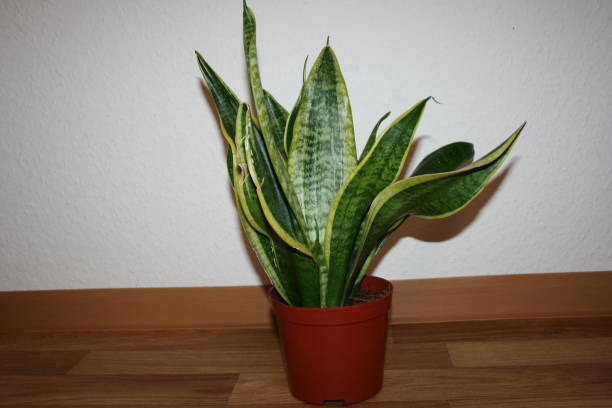Want to Purify Indoor Air? Grow These Plants
Indoor air quality is a crucial aspect of creating a healthy living environment, and one of the most natural and aesthetically pleasing ways to improve it is by incorporating houseplants into your home. Many plants not only beautify your space but also excel at purifying the air by filtering out harmful toxins. Below, we explore ten remarkable houseplants that can help you breathe easier and enjoy a fresher indoor atmosphere.

1. Peace Lily
The peace lily is renowned for its elegant white blooms and lush green leaves. According to research, this plant can improve indoor air quality by up to 60%. It effectively filters out harmful substances such as formaldehyde, trichloroethylene, xylene, and ammonia—common pollutants found in household products like paints, cleaners, and even cigarette smoke. Additionally, peace lilies help reduce airborne mold spores, making them an excellent choice for homes prone to humidity.
Care Tips:
Peace lilies thrive in low to medium light and prefer consistently moist soil. Be cautious not to overwater, as this can lead to root rot.
2. Spider Plant
Spider plants are often considered champions of air purification due to their ability to filter out carbon monoxide, benzene, and xylene. They are incredibly easy to care for and adapt well to various indoor conditions. Importantly, spider plants are non-toxic, making them safe for households with pets or children.
Care Tips:
These plants prefer bright, indirect sunlight and should be watered when the top inch of soil feels dry.
3. Aloe Vera
Aloe vera is not only known for its health and beauty benefits but also for its air-purifying properties. This succulent effectively removes benzene and formaldehyde from the air while absorbing carbon dioxide and releasing oxygen at night—making it ideal for bedrooms or poorly lit workspaces.
Care Tips:
Aloe vera thrives in bright light and requires minimal watering. Ensure it is planted in well-draining soil to prevent overwatering.
4. Areca Palm
The areca palm is a tropical plant that excels at producing oxygen while removing pollutants like formaldehyde, xylene, benzene, and toluene from the air. Its lush fronds can significantly enhance the aesthetic appeal of any room while promoting respiratory health.
Care Tips:
Areca palms prefer moderately moist soil and indirect sunlight. Regular misting can help maintain humidity levels.
5. Pothos
Pothos is a popular choice for both novice and experienced plant enthusiasts due to its low maintenance requirements and impressive air-purifying abilities. This hardy vine absorbs dust and harmful chemicals from the air and thrives in low-light conditions.
Care Tips:
Pothos can adapt to various lighting conditions but prefers indirect light. Water when the soil feels dry to the touch.
6. Snake Plant
Snake plants are perfect for busy individuals who want a low-maintenance option that still contributes to cleaner air. They filter out formaldehyde, xylene, benzene, toluene, and trichloroethylene while absorbing carbon dioxide at night—making them beneficial for bedrooms.
Care Tips:
Snake plants thrive on neglect; they prefer indirect sunlight and infrequent watering.
7. English Ivy
Recognized by NASA as one of the best air-purifying plants, English ivy effectively absorbs formaldehyde—a known carcinogen. Its dense foliage not only cleans the air but also adds a cooling effect to indoor spaces.
Care Tips:
English ivy prefers bright light but can tolerate partial shade. Keep the soil moist but not soggy.
8. Boston Fern
Boston ferns are among the most effective plants for removing formaldehyde from the air. They may also eliminate toxic metals like mercury and arsenic from their environment. However, they require consistent care and high humidity levels.
Care Tips:
Boston ferns thrive in moist environments with indirect light. Regular misting or placing them in a bathroom can help maintain humidity.
9. Kalanchoe (Life Plant)
Kalanchoe is known as the “miracle leaf” due to its ability to store water in its stems and leaves, making it suitable for dry environments. While it may not be as well-known for air purification as other plants on this list, it still contributes positively to indoor air quality.
Care Tips:
Place kalanchoe in bright light and avoid overwatering; allow the soil to dry out between waterings.
10. Chrysanthemums
Chrysanthemums not only add vibrant color to your home but are also highly effective at filtering dangerous pollutants like formaldehyde, ammonia, benzene, and trichloroethylene from the air.
Care Tips:
These flowers prefer bright light and should be watered regularly without letting them sit in waterlogged soil.

Conclusion
Incorporating these ten houseplants into your home can significantly enhance your indoor air quality while adding beauty and tranquility to your living space. By choosing plants that suit your environment and care preferences, you can create a healthier home that promotes well-being for you and your family. So why not start your indoor garden today? Your lungs will thank you!


I am not very wonderful with English but I find this real leisurely to read .
whoah this weblog is excellent i really like reading your articles. Stay up the great work! You recognize, many people are hunting around for this info, you can help them greatly.
I love what you guys are usually up too. Such clever work and exposure! Keep up the wonderful works guys I’ve included you guys to my personal blogroll.
Its such as you read my mind! You seem to understand so much approximately this, such as you wrote the e-book in it or something. I think that you could do with a few percent to drive the message house a little bit, but instead of that, that is excellent blog. A fantastic read. I’ll certainly be back.
he blog was how do i say it… relevant, finally something that helped me. Thanks
Youre so cool! I dont suppose Ive read something like this before. So nice to find any person with some unique ideas on this subject. realy thanks for beginning this up. this web site is one thing that’s needed on the web, someone with somewhat originality. useful job for bringing something new to the web!
Really clear web site, thanks for this post.
My brother suggested I would possibly like this web site. He used to be entirely right. This publish truly made my day. You cann’t imagine simply how so much time I had spent for this info! Thanks!
I gotta favorite this website it seems very useful very helpful